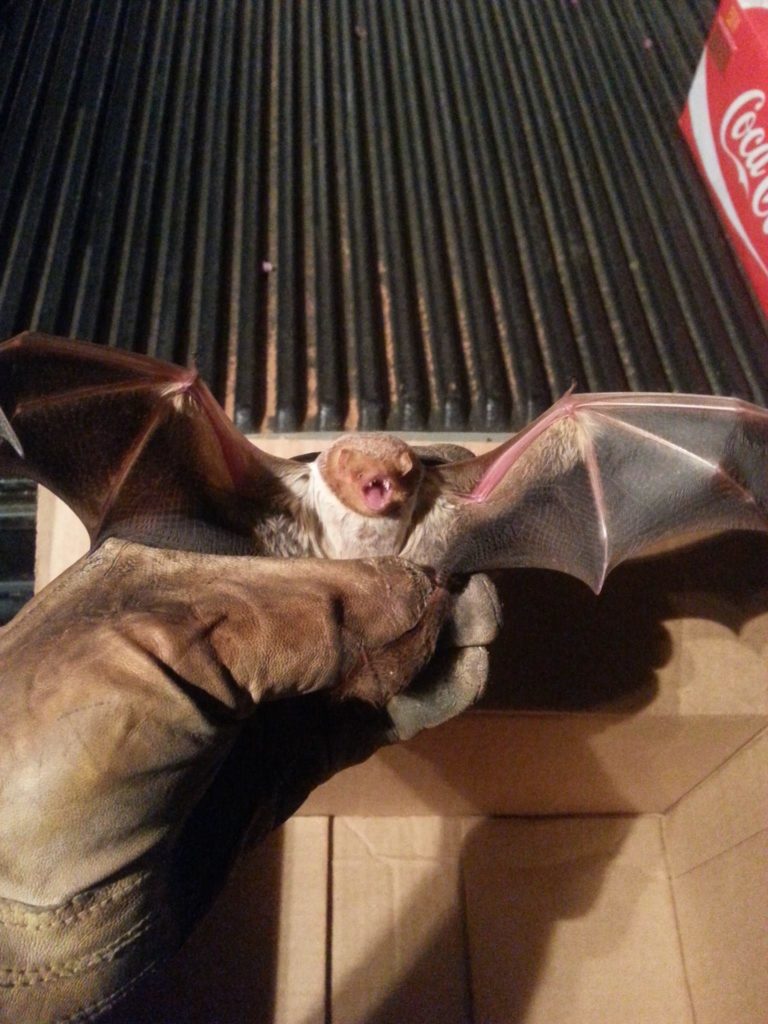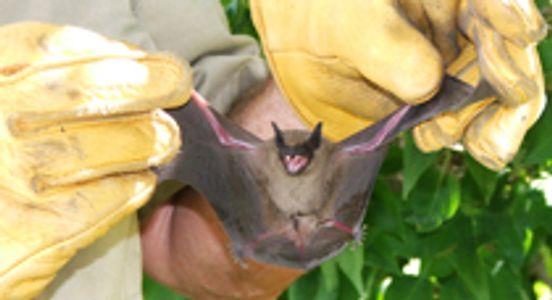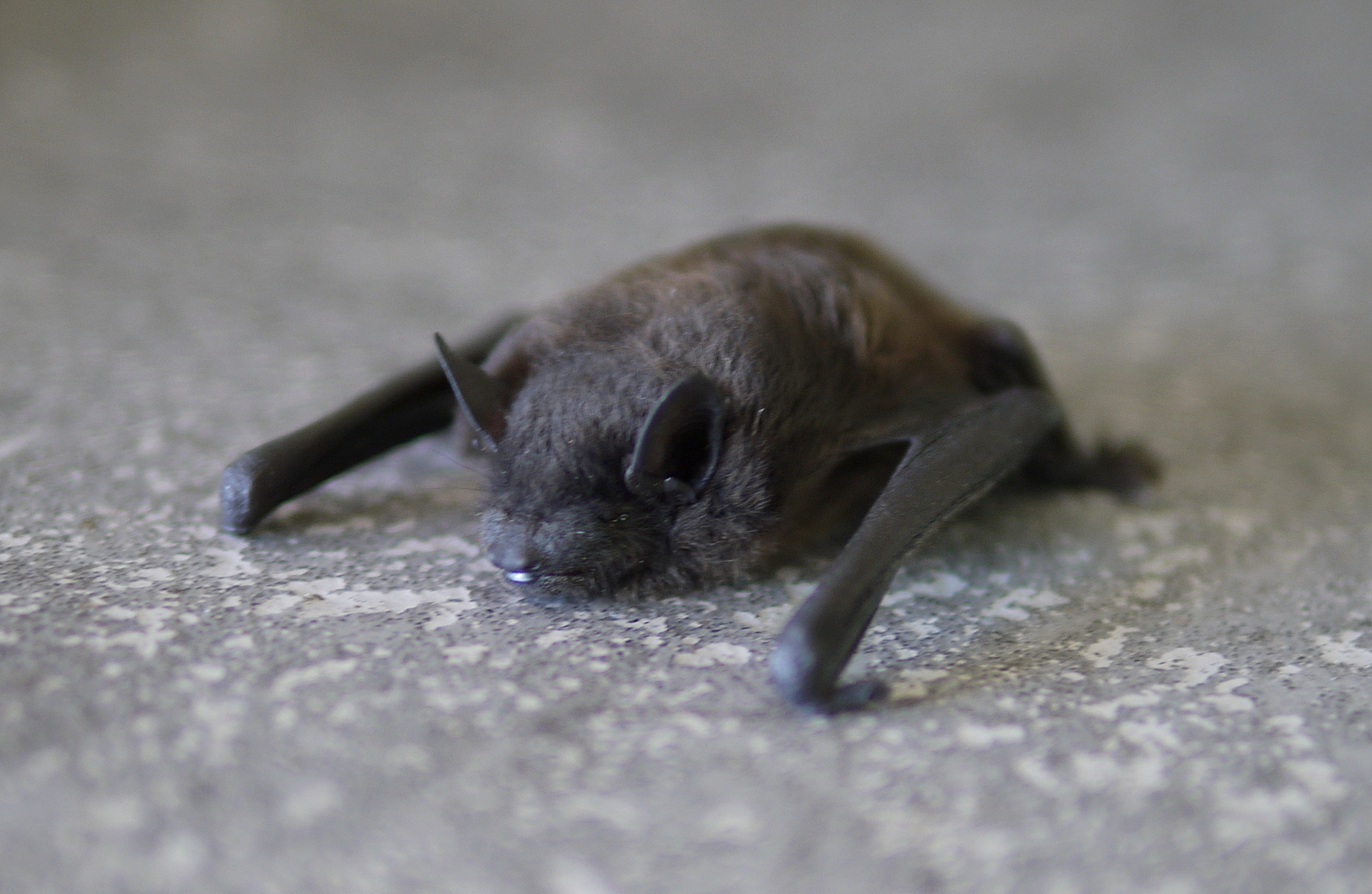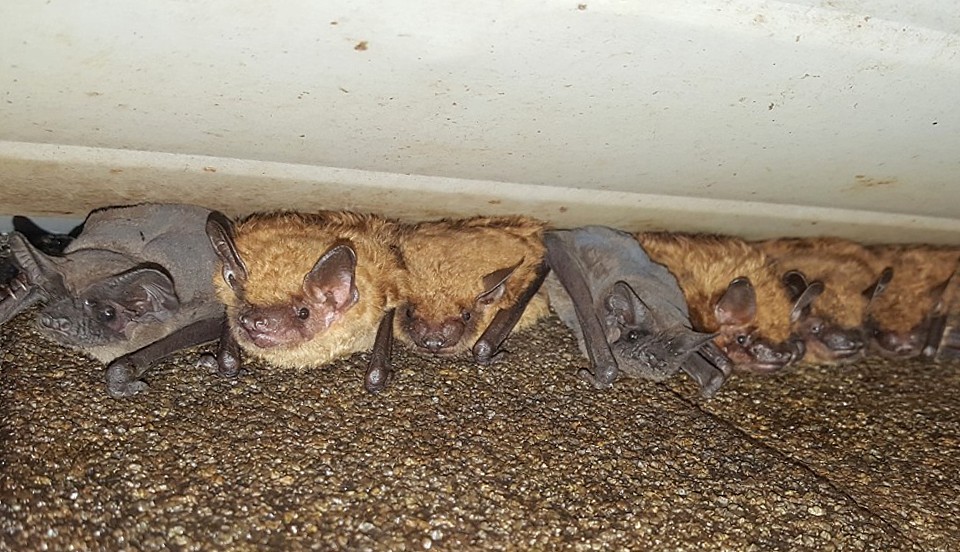Professional Bat Removal

Bat Removal
Bat infestations in your home are more common than you might think, and the presence of a bat colony in your space is dangerous. However, in many areas, bats are protected by state and/or local laws. For these and other reasons we’ll discuss below, it’s best to leave bat removal processes to experienced professionals.

How bats enter residential spaces
When bats are looking for a space to call home, they’re often drawn to hot, dry spaces that have adequate protection from predators and allow for easy flight. Unfortunately for us, many attics and spaces within homes’ walls fit these conditions perfectly. What’s more, bats can sometimes squeeze through openings smaller than a half-inch long. This leaves many homes vulnerable to bats through small holes in the roof or exterior.
The potential damage caused by bats
What can begin as just a few bats in your space can quickly become a colony of hundreds or thousands if action is not taken immediately. Bats have long lifespans (up to 30 years!), and their instinct is to stick with the same roost long-term, spanning decades if their stay isn’t interrupted.
With a large colony of bats, your potential risks increase significantly. The most common issue relates to the guano that bats leave behind inside your attic or walls. Left untreated, the guano deposits can really build up and ultimately cause a strong smell.
If the area where your bats are located is damp or humid at all, you’re also at risk of a lung infection called histoplasmosis from the guano. Bats are also known carriers of rabies, and their guano can attract other pests like cockroaches and a parasite called bat bugs.
Finally, bats can actually cause quite the noise disturbance in your home. You may begin by hearing rustling or movement in your walls or ceilings, but over time, larger bat colonies can create a significant amount of noise.

How to eliminate bats from your home
Our team at Complete Wildlife Removal is made up of seasoned professionals who are experts at wild animal control and highly trained in the best methods and equipment to trap and remove pests. It’s our job to know each animal’s habits, their most active seasons and times of day, and—most importantly—the most effective and efficient techniques to trap them.
For bats, this is especially important as each species of bat has slightly different habits that can affect the success of removal. Other factors that can affect success include the property’s architecture, the weather, and the time of year.
The time of year is important as it dictates whether attempting removal is possible or not. Most species of female bats give birth sometime between May and August each year, meaning that these months are an inopportune time to attempt to get rid of bats. It’s best to either remove the bats throughout the spring before the young arrive or to wait until fall when the newborn bats are able to fly.
As with many other pests, the process for removing bats from your home requires an assessment of your property (especially the roof when dealing with bats) to find any and all potential points of entry. Since bats can exploit even the smallest openings, there are often more options to address than with many other, larger creatures. Once all the potential openings have been identified, it’s common to carefully seal off all but one or two of the openings to force the bats out of a specific pathway when they leave for the night for food and water. When the last of the bats have exited, the final entry points will also be sealed.
Once the bats themselves are eliminated, it’s important to also address the smell of the guano, which can become quite strong over time. While there are obvious benefits to deodorizing the smell for your own sake, this step is also crucial to ensure that the bats don’t return. If they can smell their guano in the home, it’s a powerful homing signal drawing them back to your property long-term.
Timeline, cost, and other factors
The timeline, cost, and effectiveness of this process depend on many factors, including how many bats are in your home, how many entry points exist, what the time of year and weather conditions are, and how long the bats have been roosting in your space. If you’re located in Utah, Wyoming, or Idaho, give us a call for a free quote. We’re based out of Salt Lake City and Park City, but serve clients across all three states and would be happy to give a more specific estimate for your situation.

How To Get Bats Out Of The Attic
Bats are one of those wild animals that are always scaring people off and with good reason. Often referred to as rats with wings, bats seem oddly menacing when they swoop down at you from their perch up on the ceiling. But in truth, the creatures are surprisingly docile and non-aggressive. Still, the presence of a bat (or more likely, a colony of bats) on your property can pose a serious threat to you and yours. To learn more about bats in the attic visit batsintheattic.org.
Why are bats dangerous?
As you may or may not know, bats are well-known carriers of a wide range of very serious diseases, including rabies, and potentially the new coronavirus. Furthermore, their droppings (also known as guano) can be highly corrosive, and end up causing quite a bit of damage to your furniture, structures, and so on (not to mention all the diseased particles they contain).
So in other words, you want to remove bats from your property as quickly as possible, and we at Complete Wildlife Removal are here to show you how.
So how do you get rid of bats in your attic?
Well, you don’t. The truth of the matter is, in the United States, bats are largely a protected species. They are considered beneficial for the environment because of their useful habit of killing pesky and damaging insects, and so they are protected by law in many parts of North America.
This is why we wouldn’t advise that you attempt bat removal on your own, as it could quite possibly land you in legal trouble in your area. We also recommend that you read a little bit about local rules and regulations if you do suspect there’s a bat living in your attic.
So what do you do if there’s a bat up there?
First of all, make sure it is a bat and not some other animal.
One of the first things you ought to do is go up there and look for signs of a bat infestation. Knowing what animal you’re dealing with will make the process that much easier both for you and your wildlife removal service.
Pro tip: Only go up to the attic to inspect wearing appropriate protection (rubber gloves, long sleeves, thick boots, and a respiratory mask). While bats are generally less aggressive than people give them credit for, there’s still a chance of one attacking you. This is why you want to expose as little skin as possible in your inspection.
Look for bat droppings, easily the easiest to spot sign of a bat infestation. You can also listen to noises at night. If there’s a bat infestation, it’s not unusual to hear screeching and chirping, which is how bats communicate amongst themselves.
Contact a wildlife removal service.
If this was any other type of wild animal, we’d encourage you to attempt trapping or removing the animal yourself. Many homeowners prefer this as it’s a cost-effective alternative to a professional wildlife removal service. However, in the case of bats, you can’t really do that, on account of the legal restrictions.
This is why, if you’ve discovered bats living on your property, the best thing you can do is contact a professional wildlife removal service like Complete Wildlife Removal. We will advise you on the next necessary steps, depending on your local restrictions. In some areas of the United States, it may be necessary to let the bat colony sit in your attic for a while (until the young bats are old enough to go out on their own). Otherwise, exclusion methods risk leaving the small bats to starve and die.
In any case, a professional wildlife removal service is what you need. Not only will they know all the local restrictions and regulations, but they will also be able to inspect your property and figure out attractors, as well as entry points. Furthermore, most wildlife removal companies also offer cleaning and repair services. They will seal the entry points and minimize the risk of a bat infestation in the future. So while there might not be anything to do about the bats now, you can at least prevent this problem from cropping up again in the future!

How to Remove Bats from Chimney?
Bats are one of the most common examples of nuisance animals, as they are found in so many regions and different habitats. Bats are one of those animals that is just as common in cities as in forests, and they love to use humans to their own advantage. Bats are one of the most common animals to take refuge in chimneys, which can have significant problems on their own, as they could easily move into your home. Continue reading to learn more about how to remove bats from your chimney.
What attracts bats to a property?
Bats are a very unique nuisance animal in that they pick where they live almost predominantly by the amount of food they can find there. Since bats love to eat insects of many varieties, if your property has an abundance of insects, it is very likely that bats will love your property as well. Another factor that will bring bats to your property is if they can find shelter. One of their favorite places of shelter involves buildings. Homes, garages, and other buildings provide warm and dry places to live.
What problems do bats cause?
Bats are very dangerous animals to have around properties because of their health hazards. Bats are able to spread dozens of different diseases that can potentially be fatal for humans and pets. Among these are rabies, salmonella, and histoplasmosis, as well as many other viral and bacterial infections. Bats are particularly dangerous because they can spread these diseases in a variety of ways. The most common transmission method is by a human or pet coming into contact with bat urine or droppings. Another possibility is a bite or a scratch. Finally, any area that infected bat contact can be contagious.
In addition to health risks, bats around your property can leave their droppings everywhere, which can corrode and ruin certain materials. When bats get into your chimney, they can present a fire hazard, as they can cause your chimney to catch fire and potentially burn your home.
How can bats be prevented?
Preventing bats from getting into your chimney is relatively straightforward. The best way to prevent it is to purchase a chimney cap that prevents any pests from getting in. When it comes to preventing bats from getting into your home, there is a better method. The first thing you should do is examine your home from top to bottom, inside and out. Look for any holes or cracks that would allow bat access, and then repair them accordingly. Often, these fixes can include steel wool, all-weather sealant, new shingles, or new lumber.
How should bats be removed?
If a bat or multiple bats are in your chimney, there are a variety of ways to go about removing them. There is an important note about bats that must be discussed. Bats are very important to Nature, as they remove many harmful and unwanted insects, such as mosquitoes and moths. Whenever a bat is removed, they will experience significant stress, which will result in them potentially dying. That is why wildlife removal companies are generally the recommended removal method. These professionals will likely perform a live removal of the bats in one of a number of ways, depending on the specific situation.
If the bat is not located in your chimney, but somewhere else in your home, they will likely use a one-way door exclusion method. This is highly dependent from home to home and is also based on the severity of the infestation. Once the bats are removed, these experts will be able to give your home and property an examination and figure out ways to keep future pests out for good.
Request Free Quote


